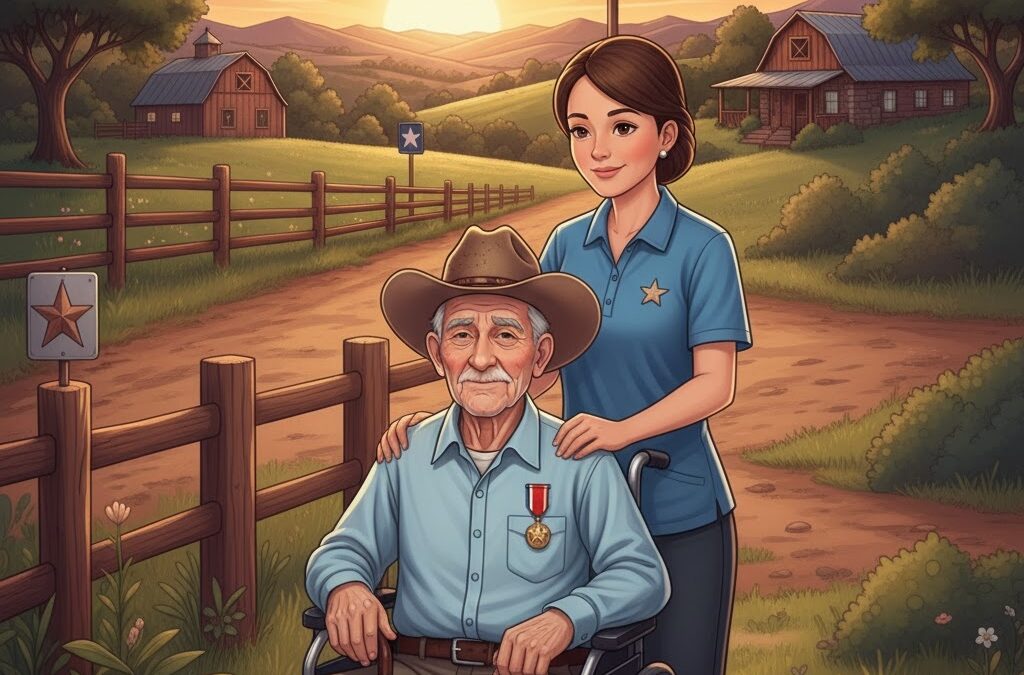Texas is home to one of the largest and proudest veteran populations in the nation. After a lifetime of service, navigating the challenges of aging can feel like a new, unfamiliar mission, one that is often complicated by a maze of bureaucracy and hard-to-find resources.
The single greatest barrier many Texas veterans face isn’t a lack of benefits, but a “lack of knowledge about benefits and where to get help”.
If you are a senior veteran or the family member of one, you are not alone in this struggle. The challenges are real, but so are the solutions. This article breaks down the five biggest hurdles aging Texas veterans face and, most importantly, shows you a path forward.
1. The Challenge: Declining Mobility and Chronic Health
As veterans age, managing chronic health conditions and mobility issues often becomes the primary daily battle. What were once simple trips to the VA clinic can become logistical hurdles. The normal activities of daily living (ADLs)—like bathing, dressing, and cooking—can become difficult or even dangerous to do alone.
The Solution: In-Home Care The solution is bringing care to the veteran, not the other way around. This allows veterans to maintain their dignity and independence by staying in their own homes. Helping Restore Ability (HRA) provides highly-trained and screened attendants who can assist with these exact ADLs, including:
- Bathing and dressing
- Cooking and light housekeeping
- Running errands and medication reminders
2. The Challenge: The “Invisible” Burden of Mental Health
The physical challenges of aging are often accompanied by a significant, but less visible, mental health burden. This can include depression, anxiety, or stress related to new health concerns, chronic pain, or memory problems. For many homebound veterans, isolation and loneliness can make these feelings even worse.
The Solution: Companionship and Respite While in-home care provides essential physical support, its impact on mental well-being is just as profound. A consistent, friendly attendant provides companionship and a vital social connection, breaking the cycle of isolation. Furthermore, this service provides essential “respite relief” for family caregivers, which is critical for the mental wellness of the entire family.
3. The Challenge: The Information Gap (Not Knowing What You’ve Earned)
A landmark 2024 needs assessment of Texas veterans found that the number one barrier to receiving services is a simple “lack of awareness and knowledge regarding available services”. Veterans and their families turn to internet searches (54%) and the VA website (48%) , but often find the information confusing and difficult to navigate.
Tragically, many aging veterans have never claimed the benefits they earned.
The Solution: Expert Navigation The best solution to an information gap is a trusted guide. HRA’s Veterans Program specializes in connecting veterans to a specific, “little-known” VA benefit: The Aid and Attendance Pension Benefit. This benefit is designed specifically to pay for in-home care. The best part? HRA’s experts handle all the complex VA paperwork for you, ensuring you have the right documents to get the benefits you’ve earned.
4. The Challenge: The “Care Gap” and Unreliable Access
For veterans who do manage to navigate the system, two new problems emerge: long wait times and unreliable programs. It can take a year or more for the VA to process a benefits application. In the meantime, the veteran is left to pay out-of-pocket or go without care.
Worse, some VA programs are facing cutbacks. In 2024, veterans in North Texas who relied on the VA’s Homemaker Home Health Aide (H/HHA) program saw their care hours suddenly and drastically cut, leaving them and their families in a panic.
The Solution: Immediate Care with No Out-of-Pocket Costs This is where HRA’s VetAssist Program provides a unique and powerful solution. This program provides an interest-free loan to veterans who are applying for the A&A benefit. This loan covers the cost of care immediately, with No Out-of-Pocket Costs to the family. You don’t have to wait for the VA. When the VA eventually approves the application and releases the retroactive, lump-sum payment, that money is used to repay the loan. It is the perfect bridge across the “care gap.”
5. The Challenge: Overwhelming Family Caregiver Burnout
Many elderly veterans rely on family members for their daily assistance. These spouses and children are the unsung heroes of the veteran community, but they are often running on empty. The Texas Veterans Commission and other agencies recognize that caregiver burnout is a critical issue and actively promote “Respite Relief” programs.
The Solution: Providing True Respite HRA’s in-home attendant service is respite care. By providing a qualified, professional attendant to take over caregiving duties for up to 19 hours a week, HRA gives the family caregiver a literal break. It’s a chance to go grocery shopping, visit a friend, or simply rest, knowing their loved one is in safe, professional hands.
You Don’t Have to Face These Challenges Alone
If you are a Texas veteran or a surviving spouse, you don’t have to navigate this maze by yourself. The challenges are real, but the solution is clear.
Helping Restore Ability is more than just a home care provider; we are your expert navigators. We solve the information gap, we handle the VA paperwork, and our VetAssist Program gets you the care you need now—not a year from now—with no out-of-pocket costs.
Are you a wartime veteran or surviving spouse who needs help at home? Click here to check your eligibility for the VetAssist Program today.

